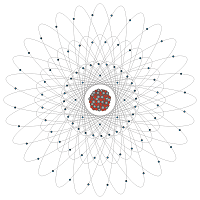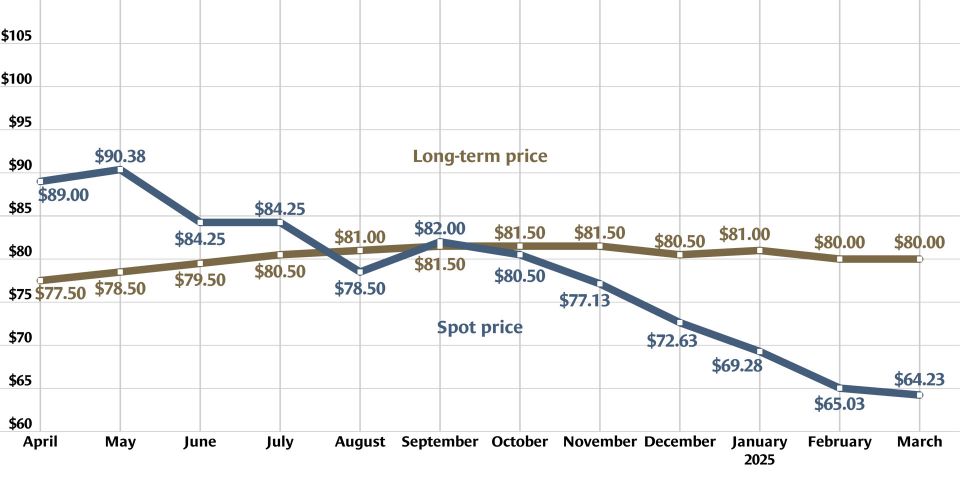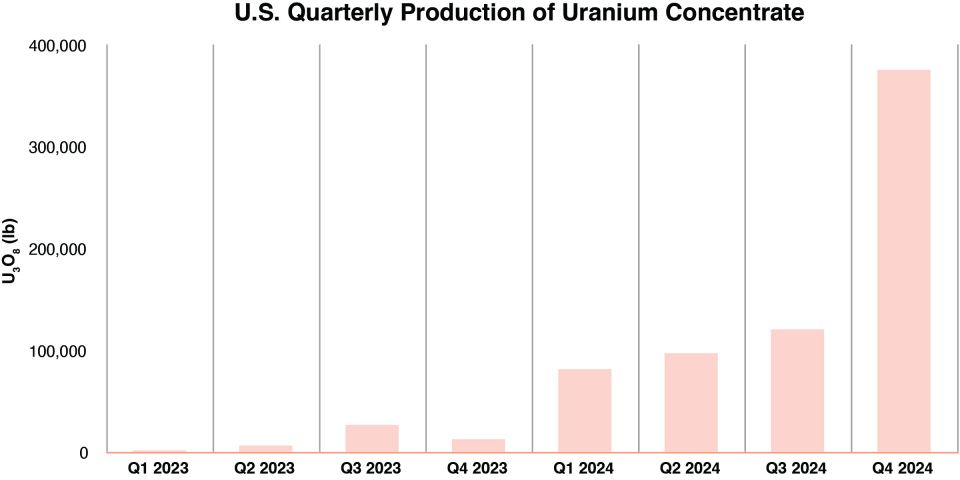Excitement about U-235 as coal competitor–circa 1939 & 1940
Conventional wisdom says that the general public was introduced to atomic energy by the explosions at Hiroshima and Nagasaki. According to that version of history, the introduction instilled a strong dose of fear that remains to be overcome.
Some observers who like to paint nuclear energy in a negative light have stated that the program to build nuclear power plants grew from a desire to find a civilian use for a technology developed solely from a desire to create weapons.
Accounts of the early days after the discovery of the fission chain reaction, however, show that physicists who were engaged in the study of the atomic nucleus and the use of neutrons to produce artificial radioactivity were keenly interested in producing useful power. They were motivated not only by a scientific desire to gain a better understanding of the fundamental structure of the atom, but also by a desire to provide the world with a new power source to compete with coal and oil. The stories also show, however, that writers who covered the scientific advances often asked questions indicating that they envisioned weapons or doomsday scenarios.
As a digital subscriber to the New York Times, widely referred to as "the paper of record," I recently performed an archive search using the term "chain reaction" and a date range starting on 01/01/1938 and ending on 01/01/1944. The results of that search confirmed my suspicion that the atomic pioneers were primarily interested in fuel production-though, when pressed, they acknowledged the possibility of explosive energy release.
The search returned 10 articles published between February 1939 and March 1941, with no additional results after that date. Even before the Manhattan Project started, scientists apparently stopped discussing chain reactions in public. Some of the 10 pieces discovered were short inclusions in a regular column titled Science in the News. Here are sample quotes from those pieces showing atomic energy optimism:
Frederic Joliot, co-winner of the 1935 Nobel Prize for chemistry, is trying to find a way to make a $2 pound of uranium give up as much heat or power as is now obtained from burning $10,000 worth of coal....
Uranium atoms will do the firecracker trick under certain restrictions. If scientists can find practical means to set up uranium chain reactions, then it is estimated that it may be possible to obtain from one pound of uranium as much energy as is at present obtained from 1,250 tons of coal.
(Associated Press, Uranium as a Coal Substitute, New York Times, June 19, 1939)
Roberts and Kuper agree that "a chain reaction cannot be ruled out definitely for either slow or fast neutrons," but decide that "there is no evidence of any kind that such a reaction will really occur." They throw more cold water over dreamers by showing that uranium has not very great economic advantage over coal even if it could be used. "Uranium oxide (96 per cent pure) sells for approximately $2 a pound, which is roughly equal to the price of a ton of coal at the mine. In terms of energy dollar-uranium is cheaper by a factor of 8.5."Though this may look good to a financier, Roberts and Kuper point out that as the demand for uranium increases so does the price. In the end further refinement would be necessary and the limited supply of high-grade ore would soon be exhausted. "If uranium were to replace 500,000,000 tons of coal used annually in this country," argue these skeptics, "the amount of uranium consumed would increase 15,000 per cent."
(Kaempffert, Waldemar, Atomic Energy From Uranium, The New York Times, October 22, 1939)
There was also a lengthy front-page article titled Vast Power Source In Atomic Energy Opened by Science published on May 5, 1940. That article documented a high level of public interest in the new discoveries and described an optimistic attitude among both academic and industrial researchers. That article provided technical information that I had previously thought was a closely-guarded, Manhattan Project secret.
A natural substance found abundantly in many parts of the earth, now separated for the first time in pure form, has been found in pioneer experiments at the Physics Department of Columbia University to be capable of yielding such energy that one pound of it is equal in power output to 5,000,000 pounds of coal or 3,000,000 pounds of gasoline, it became known yesterday.The discovery was announced in the current issue of The Physical Review, official publication of American physicists and one of the leading scientific journals of its kind in the world.
Professor John R. Dunning, Columbia physicist, who headed the scientific team whose research led to the experimental proof of the vast power in the newly isolated substance, told a colleague, it was learned, that improvement in the methods of extraction of the substance was the only step that remained to be solved for its introduction as a new source of power. Other leading physicists agreed with him.
A chunk of five to ten pounds of the new substance, a close relative of uranium and known as U-235, would drive an ocean liner or an ocean-going submarine for an indefinite period around the oceans of the world without refueling, it was said. For such a chunk would possess the power-output of 25,000,000 to 50,000,000 pounds of coal, or 15,000,000 to 30,000,000 pounds of gasoline.
Uranium ore, in which the U-235 also is present, is found in the Belgian Congo, Canada, Colorado, England and Germany, in relatively large amounts. It is 1,000,000 times more abundant than radium, with which it is associated in pitchblende ores.
(Laurence, William L., Vast Power Source in Atomic Energy Opened by Science, New York Times, May 7, 1940, P. 1)
The article continues on page 51 to provide a number of details that show a rather remarkable pace of advancement in understanding, considering the fact that only 18 months had passed since the initial recognition that neutrons could cause uranium to split into two pieces.
Not only is the energy-liberating process automatic and self-regenerating, it was explained, but it also is self-regulating. The energy liberated from the atoms heats up the water so that it turns into steam. When all the water supplied has been turned into steam, there is nothing left to slow down the fast-traveling neutrons, and fast neutrons just go through the uranium without breaking up its atoms and releasing its energy. This brings the whole process to a stop until more cool water is supplied.As one leading physicist explained it, "the colder the water the better the reaction. The reaction is self-limiting because heat (generated by the split atoms) speeds up the neutrons and the faster the neutrons the less the reaction."
"The faster you feed in the cold water," the scientist added, "the faster the water will come out hot on the other side, because more neutrons will be slowed down and thus more atoms split and more energy is liberated. Thus the process is admirably suited for power generation."
...
Because of the nature of the neutrons, even the slow-traveling ones, it was explained further, it is necessary to have a mass of at least five pounds, and possibly as high as twenty, to make the process work on a practical scale. In a smaller amount even low energy neutrons would escape into the open without splitting the initial "trigger-atom" that sets off the process. To start the process it is necessary for the neutron to remain inside the mass, so that it would enter the nucleus of an atom to start the splitting process.
...
One of the scientists explained the process of the energy-liberation from U-235 by comparing it to the burning of coal. Whereas coal uses oxygen to liberate its energy, he explained, the U-235 uses slow neutrons for the same purpose. The process of combustion in the case of the U-235, he added, is, atom for atom, 100,000,000 times as effective as is the case in the combustion of coal. However, as the atomic weight of the uranium is 235, compared with 16 for the oxygen and 12 for the carbon, there are fewer uranium atoms for a given weight than there are oxygen and carbon atoms. This reduces the energy relations of the U-235, compared with coal, to a ratio of 5,000,000 to 1.
There are several new methods being considered for increasing the yield of the new substance to large-scale amounts. But as to this, scientists greet the questioner with a profound silence.
(Laurence, William L., Vast Power Source in Atomic Energy Opened by Science, New York Times, May 7, 1940, P. 51)
On May 12, 1940, the New York Times Science in the News column written by Waldemar Kaempffert, its longtime science editor, included a section titled Atomic Power-Not Yet. That piece, published just one week later, had a completely different tone and expressed a sense of impossibility for the near term development of the technology:
Last week's hullabaloo about atomic power naturally prompted this department to look into the possibility of dispensing with coal and oil. It is our sad duty to report that the prospect is not bright. If there is any thought of Germany's making use of the work done at the universities of Columbia and Minnesota, and the General Electric Company's laboratories, it must be dismissed. Yet physicists never were so near to doing away with coal and oil as sources of energy and turning to ordinary matter as they are now....
It takes about 100 hours to make one microgram of uranium-235 or 1,000,000 hours or over a century to make one gram. About 100 grams (a little more than three ounces) would be required to make serious experiments in generating energy on a small scale. At least five pounds would be required to drive an ocean liner. It may be that a more rapid means of producing U-235 than that now available may be evolved. But the prospect of using U-235 in the present war is zero.
As matters stand we are not likely to spend centuries in accumulating the necessary uranium-235. By the time we had it so much would be known about the structure of matter that easier means of developing power from the atom would have been discovered. Accordingly, this department has decided to place the usual order for coal to be shot into the cellar, and preparing itself for the usual task of shoveling expensive black lumps into a hungry furnace.
(Kaempffert, Waldemar, Science in the News: Atomic Power-Not Yet, The New York Times, May 12, 1940)
I was immensely curious about the abrupt turnaround in such a short period of time from the same publication. The mystery was solved when I found out that Germany's push west into the Low Countries and France started on May 10, 1940. Based on the expressed concerns that Germany might be actively pursuing the technology, it's possible that the discouragement was motivated by something other than telling the complete truth.
It seems quite apparent that if the fission chain reaction had been discovered just a few years earlier or later, nuclear energy history would not have been defined by explosives-but by steady, controllable, non-coal power produced in simple piles, designed to turn heat into useful power in ways similar to those used to turn coal combustion heat into useful power.
____________________

Adams
Rod Adams is a nuclear advocate with extensive small nuclear plant operating experience. Adams is a former engineer officer, USS Von Steuben. He is the host and producer of The Atomic Show Podcast. Adams has been an ANS member since 2005. He writes about nuclear technology at his own blog, Atomic Insights.





